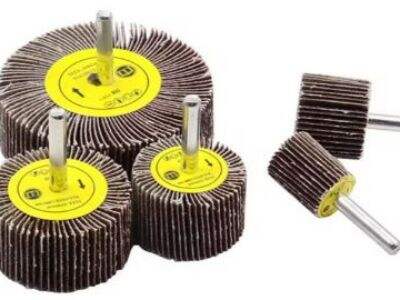When you have a project to work on, it is important to understand when to use which sanding disc. You don’t apply one-solution-fits-all marketing on your clients and it should be the same for your projects. So, if in you’re in doubt, it helps to have a guide to learn the proper sanding disc grit to use for your project.
What is Sanding Disc Grit?
There are sanding disks in an array of grits from coarse to fine. The grit of a sanding disc refers to the size of the particles on the disc. The larger the number the smaller the particles for the coarser grits. With grit, anyway — the grit you use depends on the material you’re working with and how smooth you want it.
How to Choose the Right Grit
Consider the Material When choosing the proper grit of sanding disc, consider the project and the material. For rough surfaces that require smoothing, use a coarse grit (such as 40-60 grit). A medium grit like 80-120 grit is suited to surfaces that are already smooth but require minor work. And for surfaces that really need to be smooth, a fine grit (180-240) is the ticket.
Why Use the Correct Grit?
Knowing what grit sanding disc to use is very important as it can make a difference to how your project will look like once it is finished. If you use a grit that is too aggressive, you could harm the surface. If you go with too fine of a grit, you may not have the velvety finish you seek. By using the right grit, you can ensure your project will look great.
Tips for Different Surfaces
Consider a few things when selecting the appropriate grit for different surfaces. Use a fine grit sanding disk for softer woods such as pine or cedar to prevent scratches. For harder woods such as oak or maple, a medium grit sanding disk is preferable. For metal work, you will require a 40 to 60-grit sanding disc for removal of rust or corrosion.
Ask an Expert
If you don’t know exactly which sanding disc grit you should use, it’s always best to consult a professional. People at hardware stores or home improvement centers can help you select the proper grit to suit your project. By taking their advice, you are sure to utilise the best policies.
Finally, 6 sanding discs the choice of a sanding disc grit couldn’t be more critical to a successful project than it is. So with this guide and a bit of thought about the materials you are working with, you can choose the right grit for the job. It’s important to make sure you’re using the right grit for the surface you’re sanding, and to ask for help when you need it. This sanding disc can be used for shaping, smoothing and fine shaping for all wood projects.
 EN
EN
 AR
AR
 NL
NL
 FR
FR
 DE
DE
 KO
KO
 PL
PL
 PT
PT
 RU
RU
 ES
ES
 AF
AF
 LA
LA


